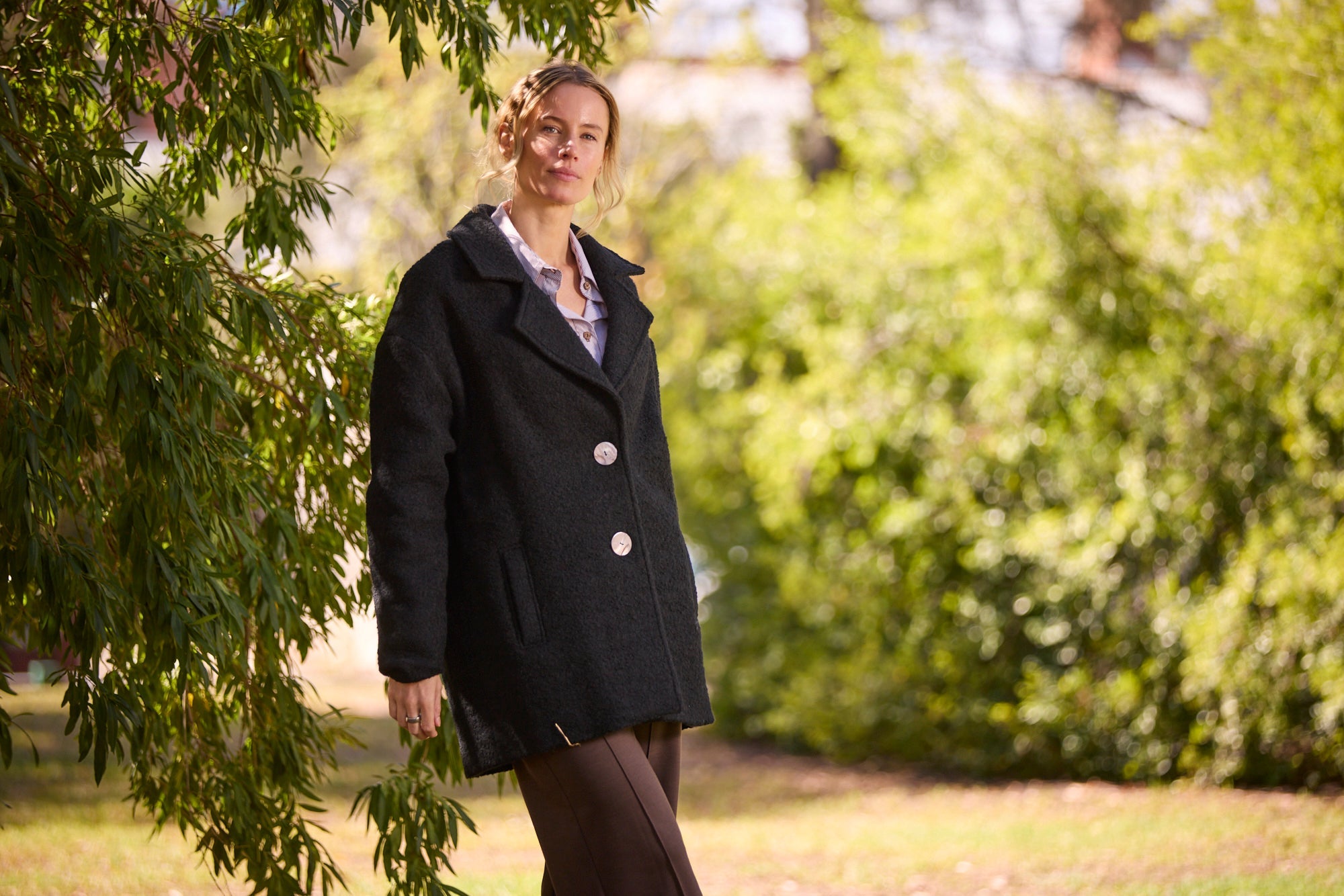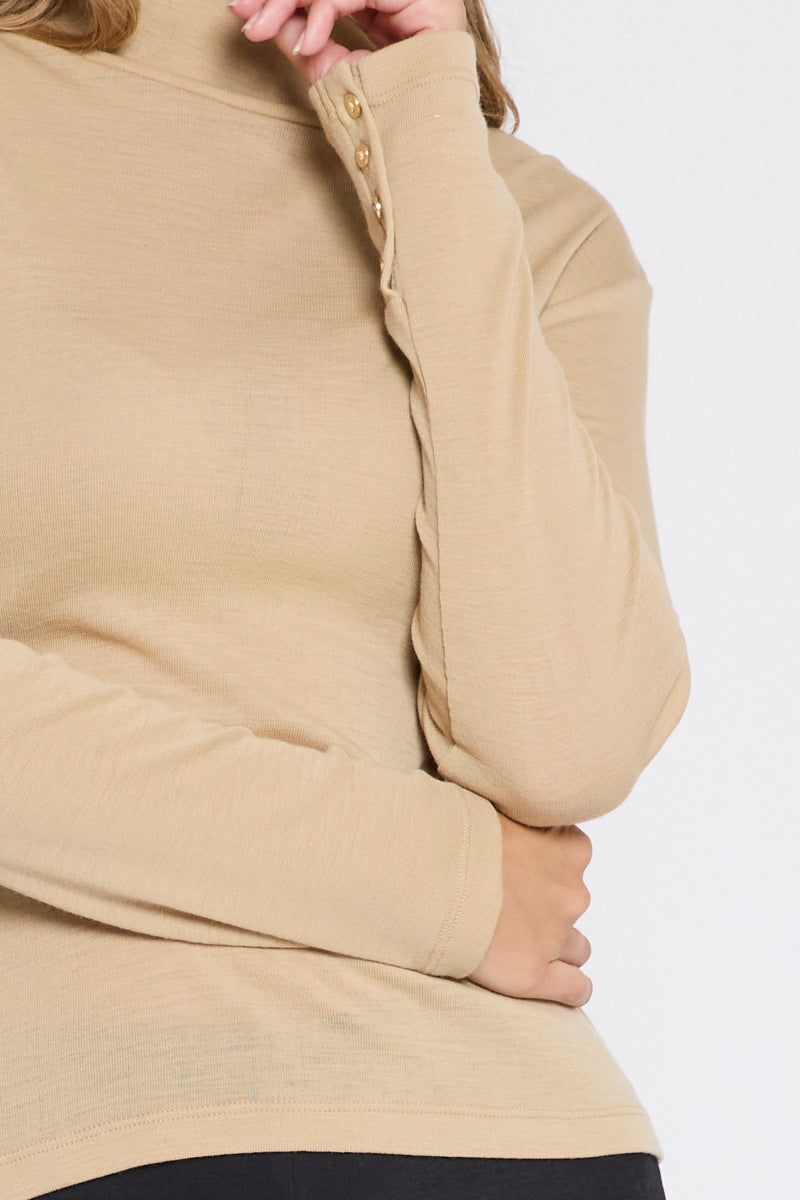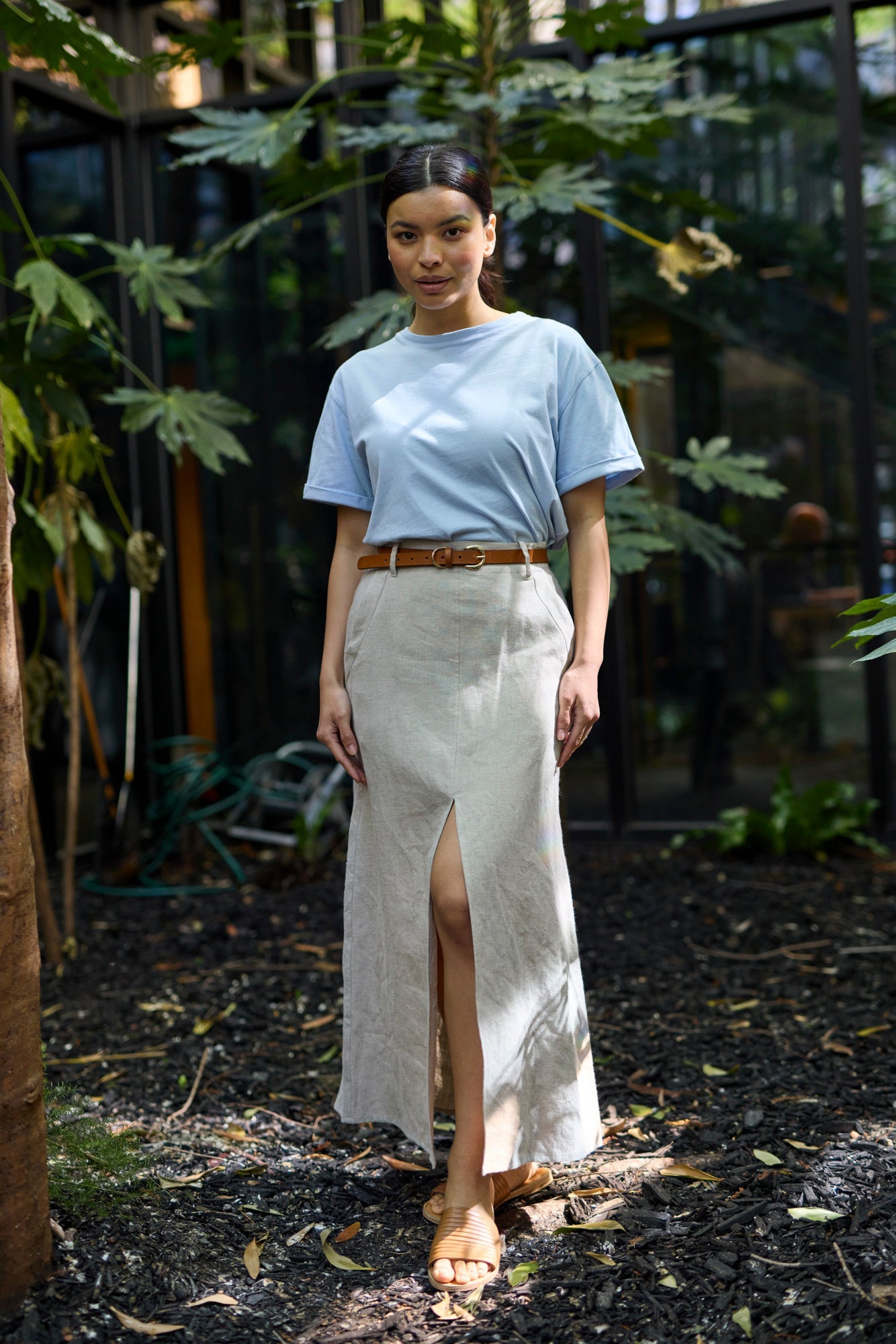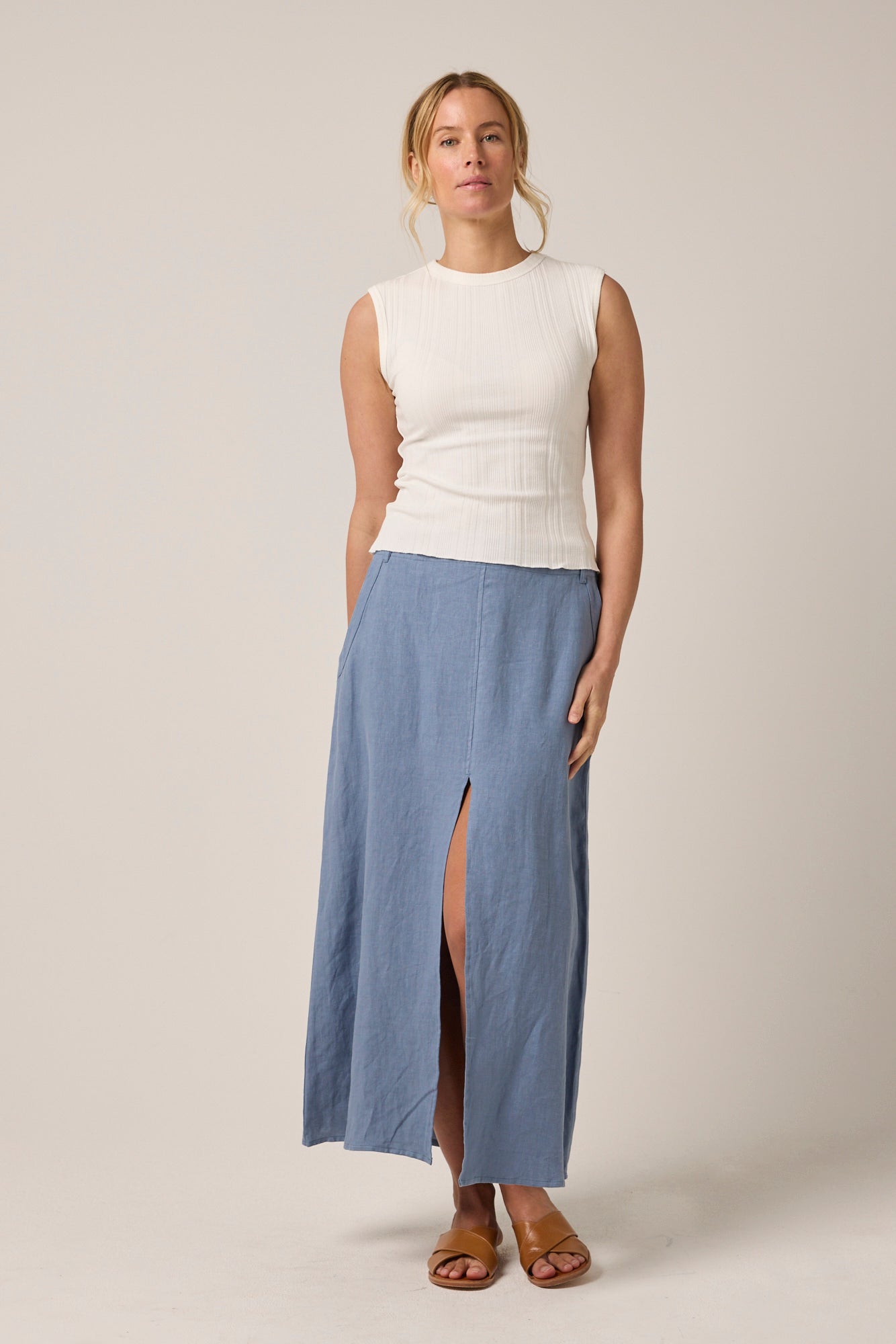Using the 30-wear Test before you buy Australia-Made fashion

The turn of a new season often brings with it an undeniable urge to refresh our wardrobes. It's a feeling of renewal, a desire to embrace a new mood with fresh colours and silhouettes. Yet, this cyclical desire, amplified by relentless marketing, can easily lead us down a path of overconsumption. We buy pieces we love for a moment, only to find them relegated to the back of the closet after a few outings.
What if we approached shopping with more intention? The 30-wear test offers a simple yet powerful framework for precisely that. It’s a personal commitment to only purchase garments you can genuinely see yourself wearing at least thirty times, a benchmark that champions longevity over fleeting trends.
The Problem with Fast Fashion in Australia
The allure of a cheap, trendy garment is hard to deny, but the hidden price is becoming impossible to ignore. Australia’s relationship with fast fashion has created a significant environmental burden. The cycle of buy, wear a few times, and discard is fuelling a waste crisis that our environment simply cannot sustain. The impacts go far beyond our shores, contributing to global pollution and resource depletion at an alarming rate.
Beyond the environmental toll, the ethical fabric of the fast fashion industry is threadbare. The business model often relies on complex, opaque supply chains where labour exploitation is common. Garment workers in developing countries frequently face poor wages and unsafe conditions to meet the demand for low-cost clothing.
What is the 30-Wear Test?
At its heart, the 30-wear test is a beautifully simple rule of thumb for conscious consumption. Before purchasing a new item of clothing, you pause and ask yourself: "Will I wear this at least 30 times?" This question forces a shift from an impulsive, trend-driven mindset to one rooted in longevity, versatility, and personal style. It’s not about deprivation, but about intentionality.
The goal is to curate a wardrobe filled with pieces you truly love and will return to time and time again, dramatically reducing your cost-per-wear and your overall environmental impact. By committing to this principle, you naturally gravitate towards higher-quality garments that are built to last, moving away from the disposable culture of fast fashion.
Origin of the 30-Wear Test
The concept was popularised by Livia Firth, founder of the sustainability consultancy Eco-Age and a prominent voice in the ethical fashion movement. In 2015, she launched the #30Wears campaign to challenge consumers to confront their shopping habits. Firth's motivation was to provide a tangible, easy-to-understand tool that could cut through the noise of fashion marketing and make people think about the lifecycle of their clothes. The idea was born from a desire to combat the shocking statistics on clothing underutilisation.
Initially, the campaign gained traction among sustainability influencers and ethical fashion communities on social media. Its simplicity was its strength. It didn't require complex knowledge of supply chains or materials, just a moment of honest self-reflection. Over time, it has evolved from a hashtag into a foundational principle for anyone looking to build a more sustainable wardrobe, becoming a key talking point in discussions about conscious consumerism and the future of fashion.
Why 30 Wears is a Practical Benchmark
So, why thirty? This number serves as a powerful psychological and practical benchmark. Committing to 30 wears represents a more than four-fold increase in that lifespan, significantly diminishing the environmental footprint of that single item. It pushes the garment beyond a single season or a fleeting trend into the realm of a true wardrobe staple.
Consider the pieces in your own closet that have already surpassed this milestone: a classic pair of jeans, a well-structured coat, or a versatile linen shirt. These items typically share common traits of being timeless designs, durable fabrics, and a fit that makes you feel confident.
The 30-wear benchmark encourages you to seek out these attributes proactively. Before buying a vibrant, patterned top, you might pause and consider if its novelty will fade after a few outings. Instead, you might opt for a piece in a classic cut and colour that you know will integrate seamlessly with dozens of outfits for years to come. It transforms shopping from a quest for newness into a thoughtful process of curation.
Why Australian-Made Fashion Supports the 30-Wear Mindset
Choosing Australian-made fashion is one of the most direct ways to find garments that will effortlessly pass the 30-wear test. Local manufacturing often operates on a smaller scale, allowing for superior craftsmanship and meticulous attention to detail. Brands that produce onshore have direct oversight of the production process, ensuring that every stitch and seam meets a high standard of quality.
How to Use the 30-Wear Test in Practice
Integrating the 30-wear test into your shopping habits is a practical process of mindful questioning and wardrobe analysis. Before you make a purchase, take a moment to pause and reflect. These steps can help guide your decision-making process.
First, ask yourself a series of critical questions to gauge an item's true potential in your life, like these, for example:
-
Versatility: Can I immediately think of at least three existing items in my wardrobe that this will pair with?
-
Lifestyle Fit: Does this piece genuinely suit my daily life and activities, or is it for a fantasy version of myself?
-
Personal Style: Does this reflect my authentic personal style, or am I just drawn to it because it's on-trend right now?
-
Durability & Care: Is the fabric high-quality and built to last? Are the care instructions realistic for my routine?
-
Timelessness: Can I confidently see myself reaching for this in one, two, or even five years' time?
Next, apply this thinking to your current wardrobe. Conduct a gentle audit to see what's working. Identify the 'hero' pieces you've already worn more than 30 times. What do they have in common? Use these insights to inform future purchases. For the items you love, focus on extending their longevity through proper care—follow washing instructions, learn simple mending techniques, and store them correctly. This hands-on approach not only makes your wardrobe more sustainable but also deepens your appreciation for the craft behind each piece.
Cost-per-Wear vs. Upfront Cost
One of the biggest mental hurdles to investing in quality, sustainable fashion is the upfront price tag. It can be difficult to justify spending more on a single item when cheaper alternatives are so readily available. This is where calculating the cost-per-wear (CPW) becomes an illuminating exercise. The formula is simple: divide the price of the item by the number of times you wear it. This shifts the focus from the initial outlay to the long-term value you receive.
Your Next Step Toward a More Thoughtful Wardrobe
Embracing the 30-wear test, to be honest, can be boiled down as a financially smart shopping strategy. However, it does commit to a more thoughtful and sustainable way of living, one we should all be trying to achieve.
By asking a simple question, we can begin to untangle ourselves from the damaging cycle of fast fashion and build wardrobes that are a true reflection of our values and personal style. This mindful approach reveals the profound long-term benefits of prioritising quality over quantity.
Discover the beauty of Australian-made fashion with Matilda Life. Explore our collection and find your next 30-wear hero, crafted with pride in Australia.




